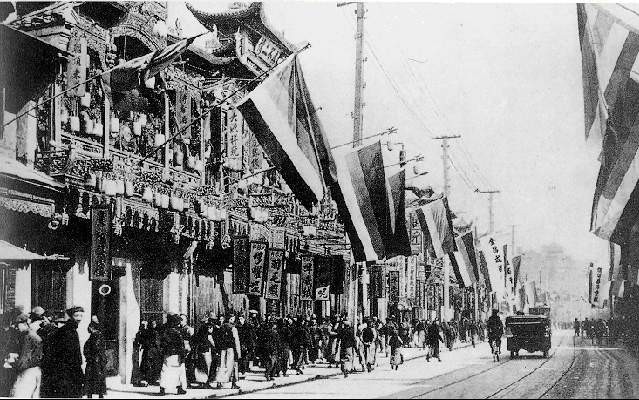The Chinese Revolution of 1911

The Chinese Revolution of 1911
The Chinese Revolution of 1911, also known as the Xinhai Revolution, was a watershed moment in Chinese history. It overthrew the Qing dynasty, which had ruled China for over 260 years, and established the Republic of China.
Causes of the Revolution
The revolution was caused by a number of factors, including:
- Dynastic decline and corruption: The Qing dynasty was in decline by the late 19th century. It was corrupt and inefficient, and it was unable to deal with the challenges posed by Western imperialism.
- Impact of Western imperialism: China was subjected to the humiliations of the Opium Wars and the unequal treaties forced upon it by Western powers. These treaties granted foreign powers extraterritorial rights and control over certain Chinese territories, causing widespread resentment and a growing anti-imperialist sentiment.
- Spread of modern ideas: The late 19th and early 20th centuries saw the introduction of modern ideas from the West, including concepts of democracy, nationalism, and human rights. Intellectuals, students, and reformists were increasingly exposed to these ideas through interactions with foreign countries and the spread of education.
- Frustration with traditional monarchy: The Qing dynasty's adherence to traditional Confucian-based autocracy clashed with the evolving political consciousness of the time. Many Chinese intellectuals and reformers believed that adopting modern governance structures and embracing reforms was essential for China's survival and progress.
- Boxer Rebellion and nationalism: The Boxer Rebellion (1899–1901), a violent anti-foreign and anti-Christian movement, exposed the weaknesses of the Qing dynasty and the extent of foreign influence in China. This uprising heightened nationalistic fervor and demonstrated the need for China to resist external domination.
- Economic hardships: The late Qing dynasty witnessed economic challenges, including widespread poverty, landlessness, and a growing wealth gap. Peasant uprisings and social unrest highlighted the need for economic reforms and more equitable distribution of resources.
- Revolutionary alliances: Various revolutionary groups and organizations emerged with the goal of overthrowing the Qing dynasty. These groups were often led by reform-minded intellectuals and military officers who sought to unite under the banner of nationalism and republicanism.
The Wuchang Uprising
The spark that ignited the revolution was the Wuchang Uprising on October 10, 1911. It began as a military mutiny in Wuchang (present-day Wuhan), triggered by dissatisfaction with the Qing government's handling of local issues and the influence of revolutionary ideas. The uprising quickly spread to other provinces, leading to a coordinated effort to overthrow the Qing dynasty.
The Aftermath of the Revolution
The Qing dynasty was overthrown in 1912, and the Republic of China was established. However, the revolution did not bring about immediate stability or prosperity. The new republic was plagued by political instability, regional conflicts, and economic hardship. It would take many years for China to fully recover from the turmoil of the revolution.
Despite the challenges, the Chinese Revolution of 1911 was a significant event in Chinese history. It marked the end of imperial rule and the beginning of a new era of republicanism and nationalism. The revolution also helped to spread modern ideas and values throughout China, and it laid the foundation for the country's eventual modernization and development.

